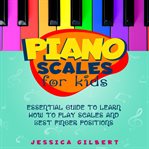Details
PUBLISHED
Made available through hoopla
EDITION
DESCRIPTION
1 online resource (1 audio file (3hr., 05 min.)) : digital
ISBN/ISSN
LANGUAGE
NOTES
Read by Betty Johnston
The piano is a longstanding, classical, and revered instrument. Invented in the 1700s by Bartolomeo Cristofori (1655-1731) of Padua, Italy, with plenty of hammers and planters to boot, the piano came to be quite popular in the homes of many a Western brood by the end of the nineteenth century. When someone thinks of a classical composer, it wouldn't be unusual to go to Bach, Beethoven, and the like and easily associate them with piano. Many believe that piano sets the standard for musicians, laying the foundation for instrumental affinity. What does that mean, exactly? The piano is awesome. But you knew that already. Yet, what makes a good pianist great? What are the tools used to get you from here to there? While playing is, of course, supposed to be fun, sometimes a bit of direction is what we need to get to the next level. The basic keyboard, housing case, lid, pedals, keys, hammers, and strings still make up the majority of the modern piano's design and componentry. This piano has withstood the test of time and largely remained intact, with the exception of electric keyboards and some piano types. How exactly does a piano work? How does it create such lovely tunes and tones? Let's see how all piano parts work to create one of the most enduring and identifiable instruments in contemporary music
Mode of access: World Wide Web







